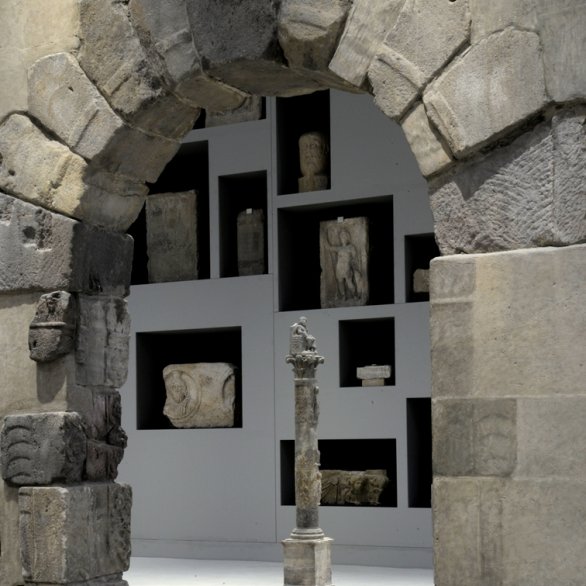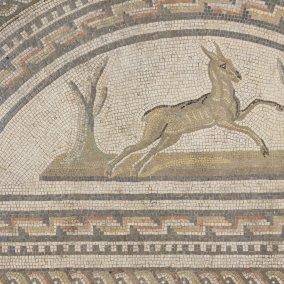The Landesmuseum Mainz is located in the former „Golden-Ross-Kaserne” – or the Golden Steed Barracks. This unique baroque architectural ensemble was previously the large horse stables of the Elector of Mainz.
The origins of the Landesmuseum date back to the French period (1798 – 1814). It was Napoleon Bonaparte who, in 1803, left the city of Mainz the so-called “French Bequest”: 36 paintings which the revolutionary troops had confiscated elsewhere. This formed the basis for what, during the past 200 years, developed into the most important art collection in today's federal state Rhineland-Palatinate.
The art and cultural-historical collections of the Landesmuseum extend from the Stone Age to the present. Among the exhibits on display are gold jewellery, shields and swords from prehistoric epochs, Roman stone monuments, sculptures and tables from the Middle Ages, Renaissance paintings and art, Baroque furniture and porcelain, unique pieces from the 19th century and art nouveau treasures, Modern art works by Liebermann, Slevogt, Corinth, Beckmann or Picasso.
Equally worth seeing: The impressive baroque ensemble of the museum with ist modern glass and steel structures alone, as well as the electoral stabels and the indoor riding hall are worth a visit.
The origins of the Landesmuseum date back to the French period (1798 – 1814). It was Napoleon Bonaparte who, in 1803, left the city of Mainz the so-called “French Bequest”: 36 paintings which the revolutionary troops had confiscated elsewhere. This formed the basis for what, during the past 200 years, developed into the most important art collection in today's federal state Rhineland-Palatinate.
The art and cultural-historical collections of the Landesmuseum extend from the Stone Age to the present. Among the exhibits on display are gold jewellery, shields and swords from prehistoric epochs, Roman stone monuments, sculptures and tables from the Middle Ages, Renaissance paintings and art, Baroque furniture and porcelain, unique pieces from the 19th century and art nouveau treasures, Modern art works by Liebermann, Slevogt, Corinth, Beckmann or Picasso.
Equally worth seeing: The impressive baroque ensemble of the museum with ist modern glass and steel structures alone, as well as the electoral stabels and the indoor riding hall are worth a visit.

